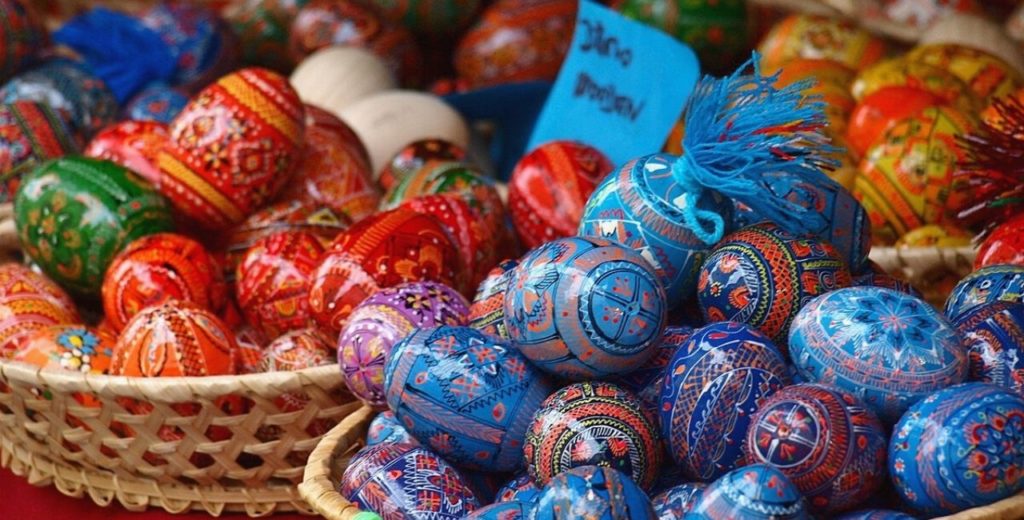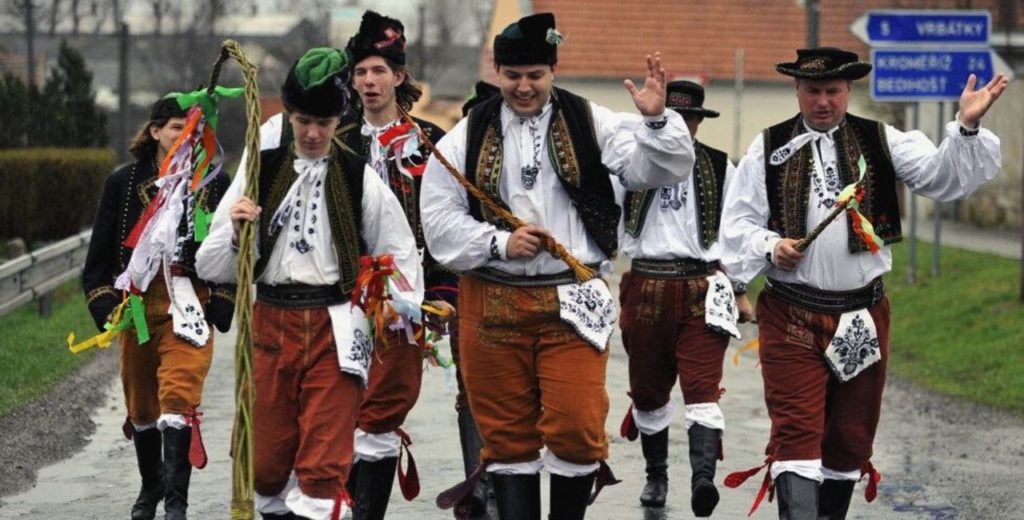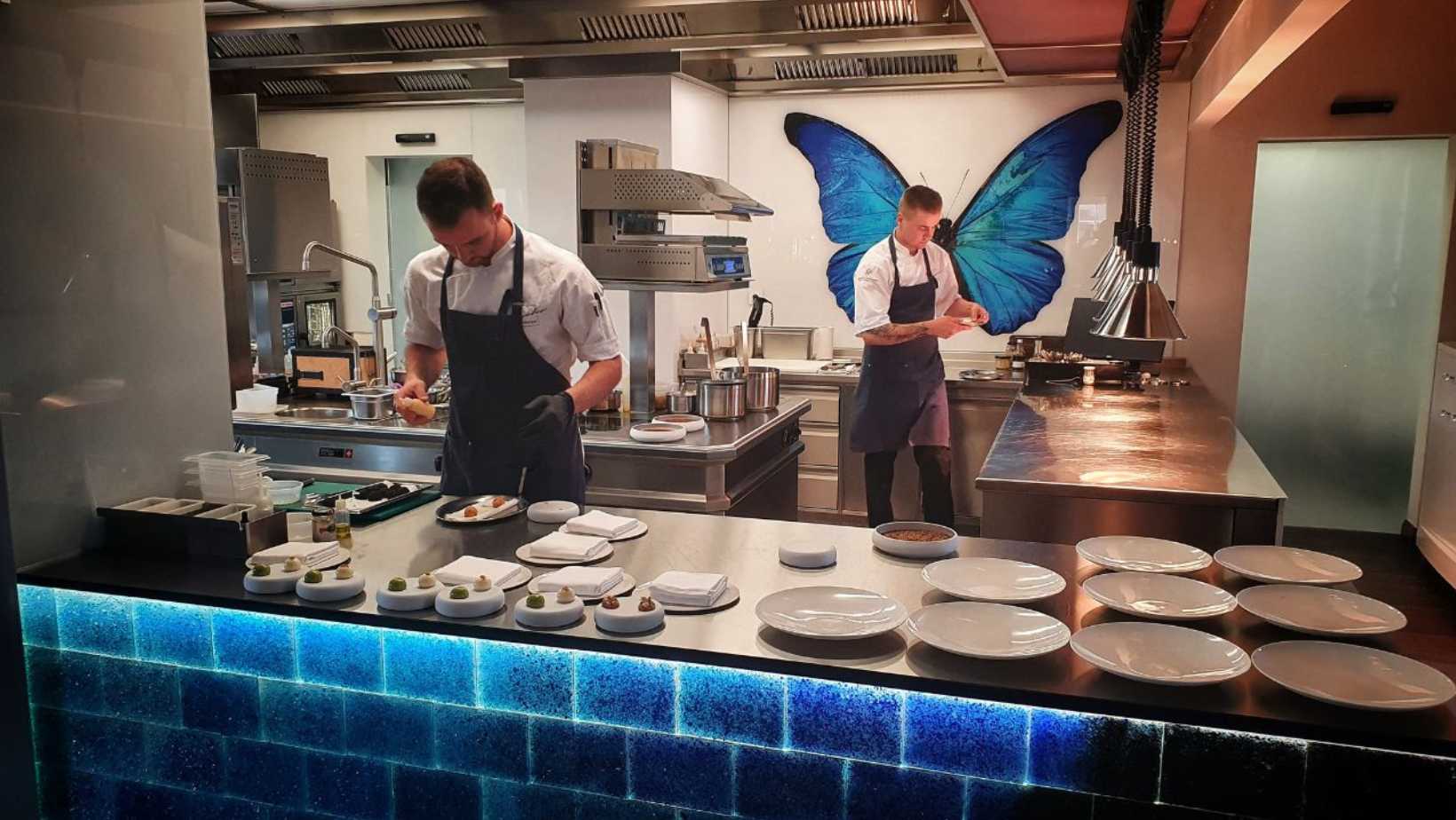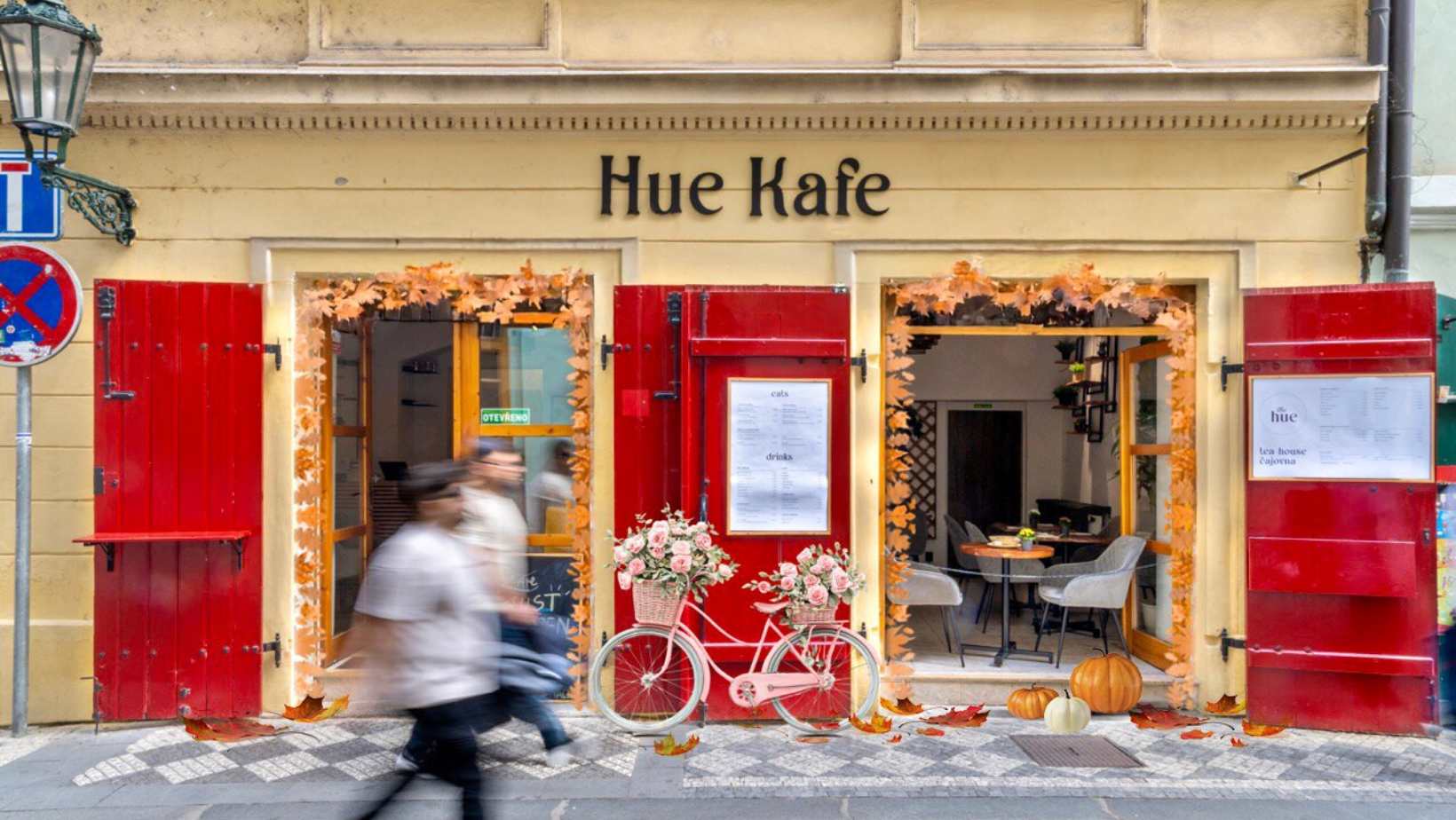For Czechs, as in many nations around the world, Easter brings with it a wealth of traditions and customs which have little to do with the religious aspects of the Christian holiday but are rooted in pagan rituals welcoming spring’s arrival.
Until last year when Good Friday became an official Czech holiday, Velikonoční pondělí (Easter Monday) was the only state holiday associated with Easter in the country.
Traditional Easter in the Czech Republic
Even if it’s not the way that many Czechs celebrate today, the pomlázka, a homemade whip braided from willow branches and decorated with colorful ribbons, has been for centuries one of the most recognizable symbols of the Czech Easter celebration.
Along with kraslice, hand-painted eggs decorated with intricate designs, both symbols belong to the tradition of koledovani (caroling) which occurs during the secular celebration of Easter Monday in the Czech Republic, particularly in villages and small towns across the country.
The pomlázka
According to pagan tradition, the willow whip was used to symbolically give women the fertility and health they’d need in the coming year. Men and boys braided willow branches to make the whip because the blooming willows were the first sign of spring’s arrival.
As one male Czech friend eloquently explained, “We whip you, so you don’t dry out.” In return for the blessings of vitality and fertility, Czech women give kraslice (derived from the word, krásný, or beautiful) to their visitors. In the past, giving a specially decorated egg to a certain boy could be the beginning of a romance.
Kraslice
The traditional kraslice were real eggs with their insides blown out, so that they could be kept as keepsakes and displayed as decorations for years to come. Popular dying methods including using vegetables such as onions skins, beet root or sauerkraut. The designs were etched on with wax or reed or punched out with special tools before the eggs were dyed. Decorating the eggs was a matter of skill and craftsmanship with particular techniques and methods passed down by Czech mothers and grandmothers to their daughters over generations of sitting at the kitchen table together.
Today, if you visit a historic Czech or Slovak skansen (open air museum) you can see egg preparation in the traditional way. Czech school children learn to make kraslice in school, decorating them with oat flakes, sugar, poppy seeds and other natural ingredients. To see artisanal Czech Easter eggs, head to the Easter Egg exhibition at the National Agricultural Museum in Prague.

Koledovani
Caroling is a bit like trick-or-treating, except that only boys and men perform the door-to-door visits while girls, their mothers and grandmothers stay at home to receive the visitors. Upon arriving at a house, tradition dictates that a boy recite an Easter koleda (poem), usually rhyming. Afterward, he is welcomed into the house and invited for a visit.
During the days leading up to Easter Monday, Czech women prepare the best of their hospitality, including gifts of decorated eggs, chocolates, liquor (for men), Easter sweets, small open-faced sandwiches and an Easter mazanec (Easter sweet bread with raisins and nuts).
Visits are considered by the older generation of Czech women to be a sign of respect and appreciation – i.e. the more visits, the more well-respected you are in the community. It’s akin to the “How many different types of Christmas sweets do you bake?” mentality that is also prevalent among Czechs from my mother-in-law’s generation.

-
NEWSLETTER
Subscribe for our daily news











